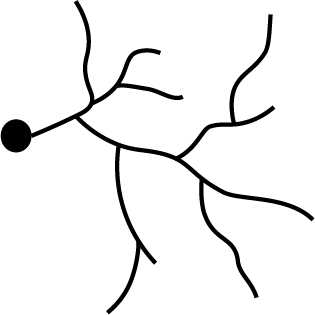
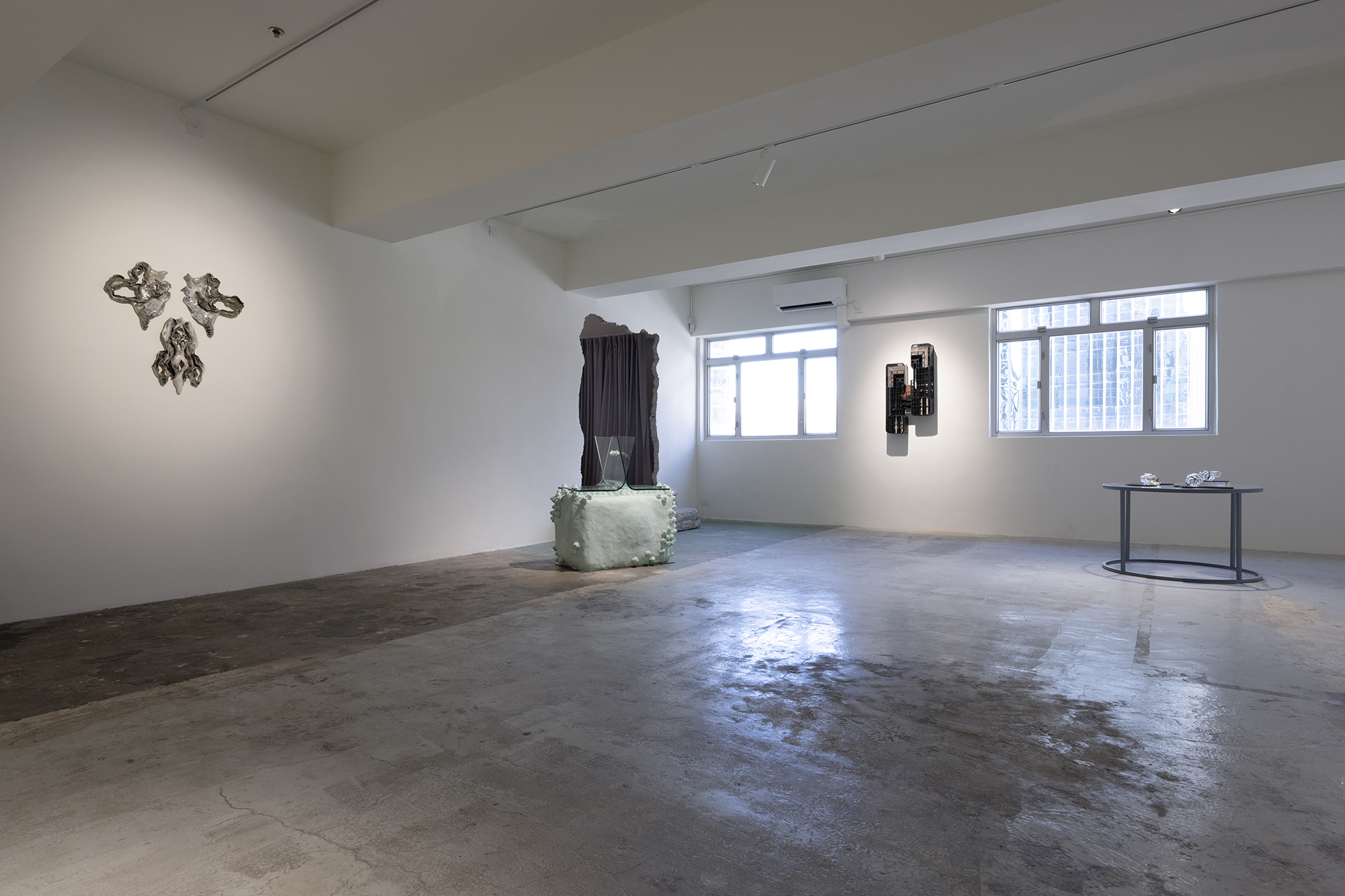


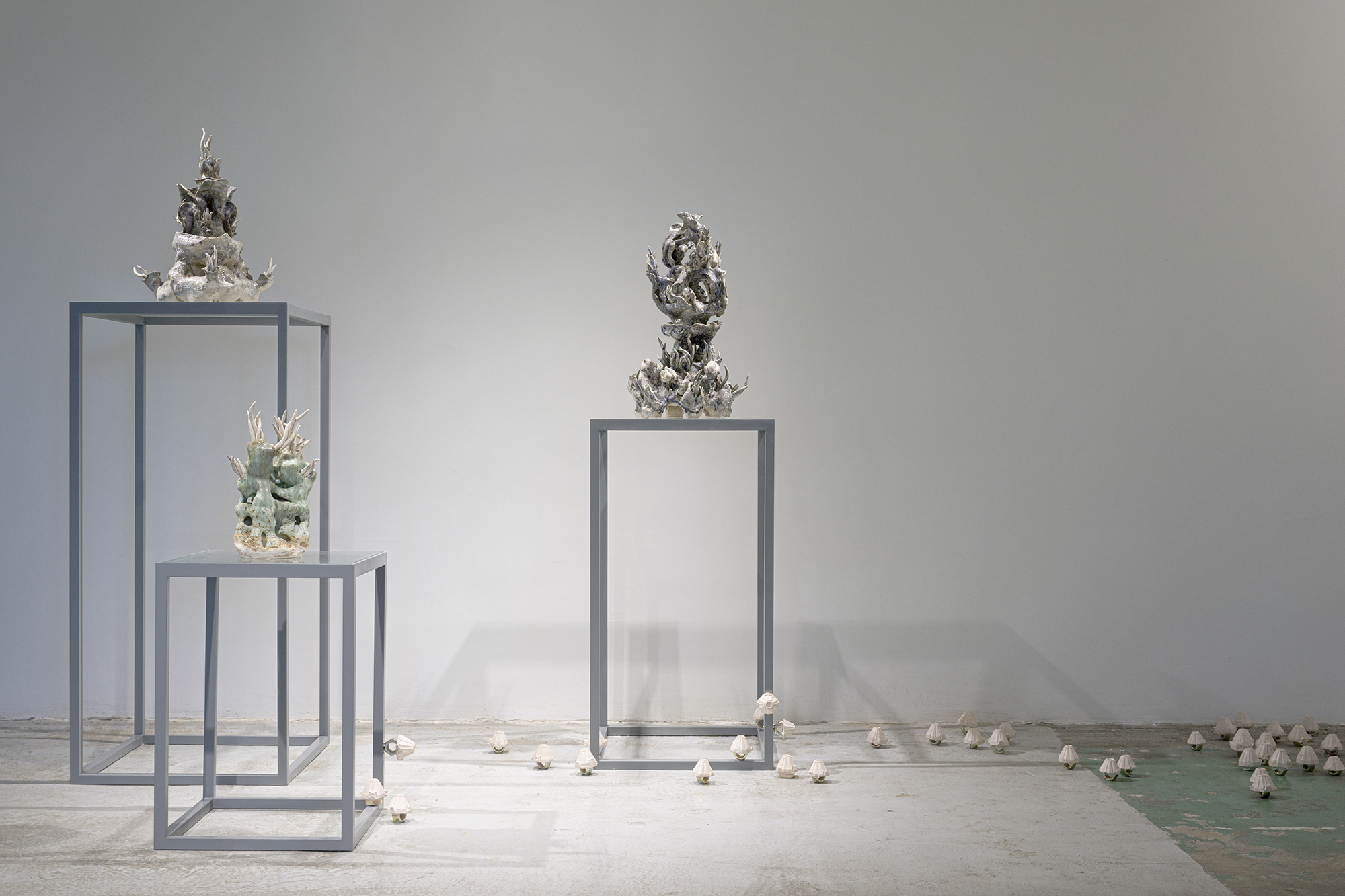

Installation view of 'Strange Strangers' at Para Site, Hong Kong, 30 June—13 August 2023
Photo: Felix S.C. Wong
Courtesy of Para Site, Hong Kong


 Intimacy of Strangers
Intimacy of Strangers 2023
Handblown borosilicate glass
Photo: Felix S.C. Wong, courtesy of Para Site, Hong Kong
By integrating natural and synthetic materials and idiosyncratic forms, the three handblown borosilicate glass works under the series Intimacy of Strangers highlight the central role of symbiosis in the evolution of early life forms. The objects evoke an uncanny sense of familiarity and estrangement, haunting the viewer with their past incarnations tracing their own biological and mineral origin, while encoding the clues for future evolution. Seemingly floating on a circular plinth in robin egg blue, the iridescent reflections and refractions symbolise the boundless possibilities in endosymbiosis. Contrary to the conventional understanding that evolution takes place in a progressive, forward-moving, linear approach, some of its most significant events result from the togetherness of different organisms across domains. Eukaryotic cells in animals, plants, fungi, and protists, arise from the components of other organisms. For instance, organelles like mitochondria and chloroplast were once free-living prokaryotes but were later engulfed by other cells. Rather than being eradicated by the host, they continue to live symbiotically inside it. Evolving together over time they now function as a single organism, and one cannot exist without the other. In this sense, all life forms, including human beings, are walking miracles of an intimate cellular encounter that turns into an amorous entanglement - once strangers, now neighbours.


 pabulite (primordial bliss)
pabulite (primordial bliss)2023
Glazed stoneware
78.7 x 96.5 x 10.2 cm
Photo: Felix S.C. Wong, courtesy of Para Site, Hong Kong
Installed as a wall totem in the exhibition space, pabulite (primordial bliss) (2023) consists of three glazed stonewares. Appearing as shedded skins or eroded landscapes, they serve as an emblem that confronts the viewer with its unimaginable ancestral traces, while reflecting upon the radical metamorphism in an ever-changing environment. The term pabulite was proposed by a recent paleontological study to describe the discovery of hybrid fossilised remains of a crustacean, a belemnite, and a vertebrate, caught in the digestive process from the Early Jurassic Posidonia Shale. Composed of the Latin term 'pabulum' for food and the Greek term 'lithos' for stone, pabulite refers to incomplete organismal remains that can show traces of the organisms' predation; put differently, it represents the living and intense entanglement in petrified form. The artist employs a meticulous technique in handling clay to depict indefinable body parts that are seemingly the decay of various life forms in metallic green, gold, silver, lilac, and midnight blue hues, including fangs, skins, scales, and gastrointestinal tracts. By visualising the dissection and deconstruction of such conglomerates, the work encapsulates a mini-ecology that presents the violent yet intimate predator-and-prey relationship and interspecies interactions through the consumption and excretion of other life forms that are broken down into materials.

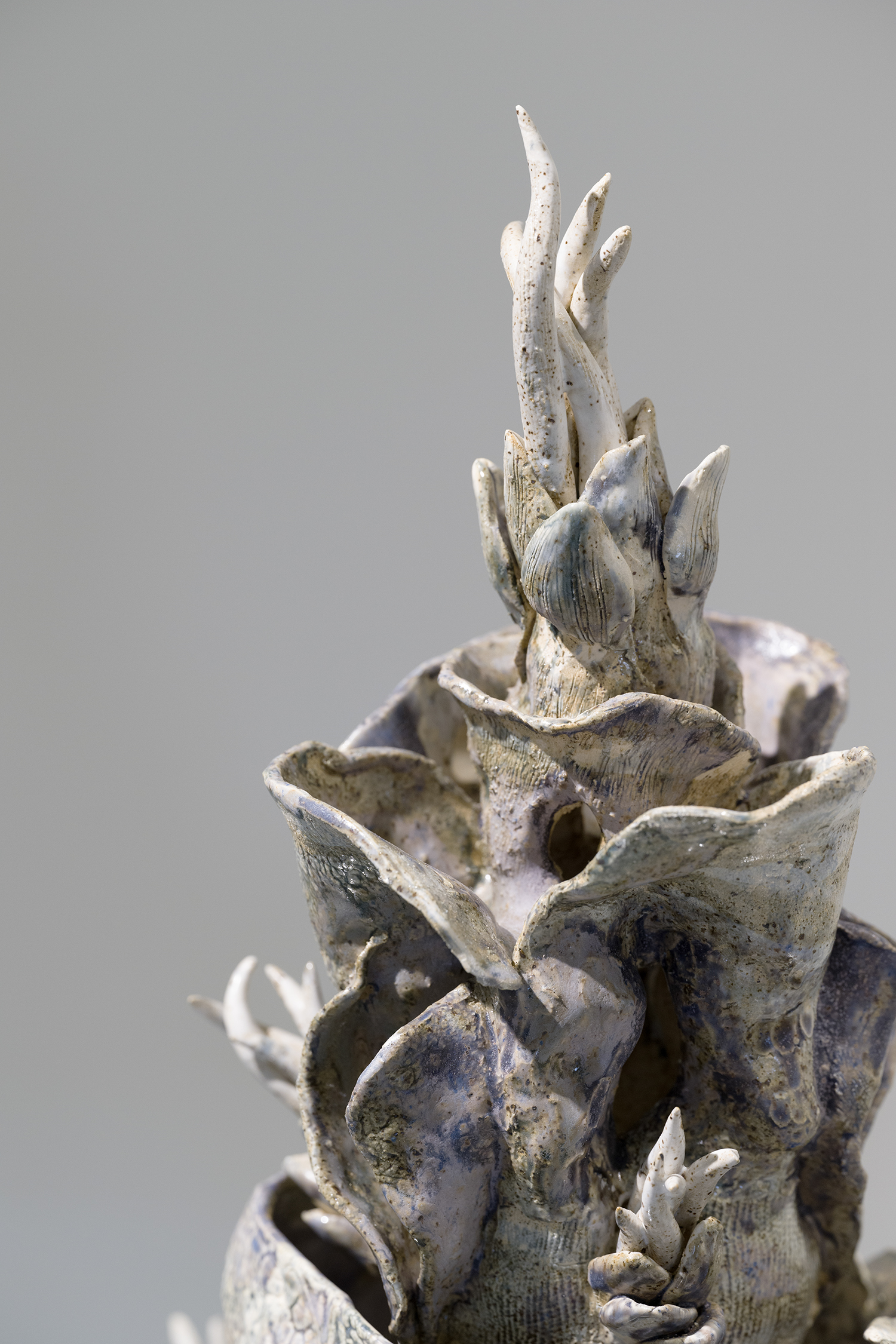
As they folded in and breached out (tentacular)
2023
Glazed stoneware
43 x 25 x 28 cm
 As they folded in and breached out (sprout)
As they folded in and breached out (sprout) 2023
Glazed stoneware
30 x 18 x 18 cm


 As they folded in and breached out (bursting)
As they folded in and breached out (bursting)2022
Glazed stoneware
47 x 30.5 x 30.5 cm
Presented on metal plinths in lemongrass hues, the three glazed stoneware sculptures under the series as they folded in and breached out traverse classifications of animal, vegetal, fungal, and mineral. Drawing from the environmental philosophy of deep ecology, which promotes the inherent worth of all living beings regardless of their instrumental utility to human needs, the artist highlights the existence of organisms that are abjected by an anthropocentric worldview. Offshore fragments like barnacles, algae, and marine invertebrates, as well as indeterminate vestiges of scales, tendrils, gills, limbs explore manifold evolutionary pathways that arise from an erratic climate. The multi-layered and lively sculptures with twisting tentacles and protruding sprouts invite the viewer to ponder further the symbiotic, mutualistic, parasitic, and cancerous relationship between these elusive organisms, particularly how they undergo unexpected developments under conditions of extreme weather, rising sea levels, melting polar ice caps, and declining biodiversity. The folding and breaching on these glazed stonewares, along with the environments they inhabit, such as the hollow metallic structures, symbolise a highly permeable and boundless biosphere that defies any binary structures, nurturing queer kinships across myriad networked life forms.


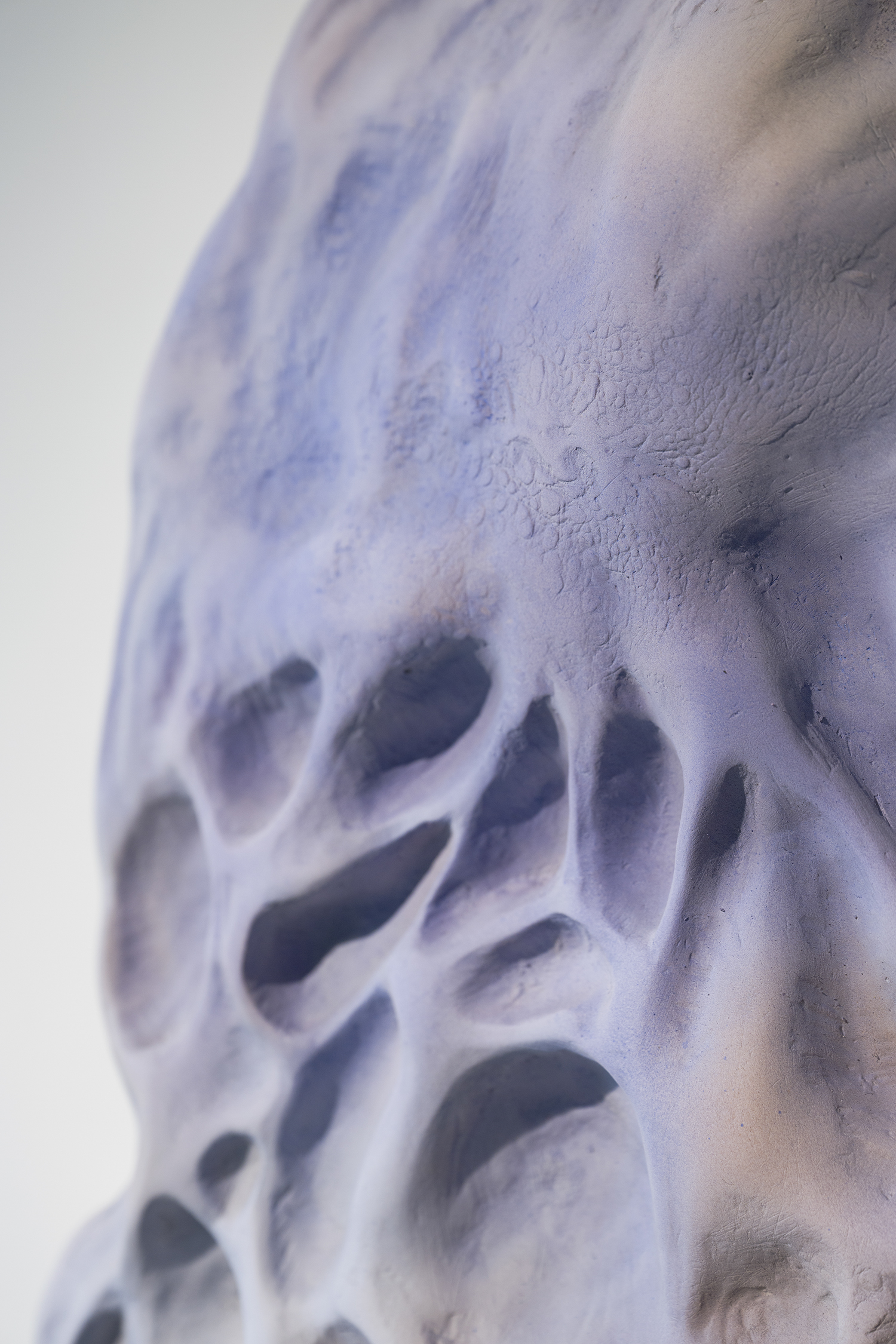
Said N’ba N’ga, who lived in certain muddy shallows, among the roots of some protoconifers
2021
Aqua resin, acrylic paint
31 x 23 x 4 inches


Said N’ba N’ga, whose eyes as round and inexpressive as stones, meet her oblong eyes
2021
Aqua resin, acrylic paint, glass
28 x 15 x 4 inches



Said N’ba N’ga, as they surfaced and cleft the waters
2021
Aqua resin, acrylic paint, glass
23 x 14 x 3 inches


Said N’ba N’ga, the land were going to disappear just as they had cropped up
2021
Aqua resin, acrylic paint, glass
19 x 10 x 3 inches
Inspired by Italo Calvino's 'The Aquatic Uncle', this body of work consists of four aqua resin wall pieces in vibrant violet hues, which speculates the evolving transmutation between aquatic and terrestrial life forms, drawn from the paleontological evidence of the first vertebrates who leave the sea to arrive on land in the Carboniferous period. The short story revolves around the protagonist Qfwfq, whose family mostly dwells on land by adapting fins into paws and becoming reptilian in the process. As the only member who still lives in the sea as a fresh-water Coelacanthus, their great-uncle N'ba N'ga is perceived as the black sheep of the family who refuses to come ashore like 'civilised' people. With life on the land symbolising the manifesto of the promised future and the one in the deep sea as unwanted primitive regression, the narrative highlights the problematic obsession with rationality and progress in modernist thinking in connection with environmental and queer debates. The artist translates such unsettling ecological poetics into forms that allude to residues of interspecies metamorphosis. The intriguing marks, patterns, and formations on the sculptures resemble the fossilised remains of coelacanths such as the scales, spiky fans on the fins, and crescent-shaped tail. They map out the ancestral traces of land vertebrates and hauntingly remind the viewers of their once 'non-modern' past. Each sculpture also represents key confrontational and realising moments in the short fiction. One of them is when Qfwfq's fiancée Lll encounters N'ba N'ga for the first time by the lagoon, marking the return of the repressed where she begins an awakening journey to reconnect with and later submerges into negated history. Similarly, being entranced by the four enigmatic sculptures, the audience may embark on a familial odyssey, tracing the complex formation and expansion of their own lineage and kinship.
Strange Strangers
Para Site Hongkong
2023
Duo exhibition with Leelee Chan, curated by Cusson Cheng
